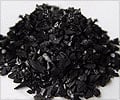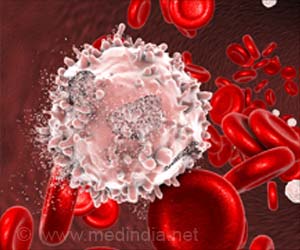A multinational team of researchers has found a way to make carbon nanotubes, opening up the potential for a new form of drug delivery
A multinational team of researchers based in the UK has found a way to make carbon nanotubes easily cross biological barriers, opening up the potential for a new form of drug delivery .
UK-based researchers from the School of Pharmacy, University of London, chemically modified carbon nanotubes by adding a range of different functional groups and found that they were able to enter a variety of cell types, including human cancer cells.Carbon nanotubes have shown potential as a form of drug delivery, but there is a major setback in that they are highly insoluble in their unmodified form.
”This makes them impossible to handle in the biological environment,” Dr Kosta Kostarelos, deputy head of the Centre for Drug Delivery Research and leader of the research group told In-PharmaTechnologist.com.
It is the functionalisation of the carbon nanotubes that allows them to become water soluble, and therefore able to be used in a biological environment with potential applications as a novel drug delivery method.
”The functionalisation of the nanotubes is therefore hugely important.” Dr Kostarelos continued.
The research team found that the functionalised nanotubes were able to easily cross-cell barriers in mammalian, bacterial and fungal cells without causing cell death, and were even able to enter cells under conditions, which would usually hinder this process.
Advertisement
”Nanotubes capable of acting as cell-penetrating materials will have tremendous advantages. The potential of functionalised carbon nanotubes to act as nanoneedles that pierce plasma membranes and translocate directly into cytoplasm without causing cell damage or death is significant for a variety of biomedical and biotechnology applications.”
Advertisement
”What we do know is that whatever functionalised carbon nanotube we used, it was taken up by every different kind of cell we investigated,” said Kostarelos.
”Some types of functionalisation prompted a greater uptake, but it was by no means a prerequisite. All functionalised nanotubes were taken up to a significant extent.”
The research team, with colleagues over in France, have experimented with delivering drugs such as amphotericin B (an anti-fungal treatment) and methotrexate (an anti-cancer drug) using the functionalised carbon nanotubes, but encountered some obstacles with drug release along the way. ”Once you chemically conjugate the drug on the nanotube, the drug is not capable of leaving the nanotube,” Dr Kostarelos explained.
”So we therefore need some kind of reversible association to be able to release the drug intracellularly.”
Technology to tackle this problem does exist, but needs to be modified to address this specific case. The researchers are currently pursuing this line of investigation as part of the next stage of their research.
In February last year the team published results of the first ever-intravenous administration of functionalised carbon nanotubes in vivo, injecting the nanotubes into animals. The results showed that the functionalised nanotubes were excreted very quickly in urine, which is a significant point in favor of their use in drug delivery, as it would alleviate toxicity concerns regarding the nanotubes themselves.
Now, the research team has moved on a step further and has added drugs to the mix rather than the nanotubes on their own. While still in the research stage at present, results are anticipated within the year and according to Dr Kostarelos the results are looking ”very promising”.
If the research team's working hypothesis regarding the uptake of functionalised carbon nanotubes is correct, the technique could offer significant advantages over other drug delivery mechanisms currently used.
Traditional delivery methods (using liposomes for example) usually exploit endocytosis, but stop before reaching the cytoplasm leaving other barriers for the drug to fight through. By piercing plasma membranes and heading straight to the cytoplasm, the functionalised carbon nanotube encounters fewer biological barriers and delivers the drug more directly.
The nanotubes also offer a structural advantage in that they are extremely thin but very long, offering a large surface area on which to graft the required drug. This again offers an improvement over liposome drug delivery, and also allows the amount of drug loaded onto the nanotube to be regulated.
Kostarelos observed that developments and improvements in carbon nanotube material are occurring almost daily, and the product itself is therefore likely to become more refined over time. Although difficult to assess the cost of a potential drug delivery product resulting from the technique, Kostarelos noted that there is so many possible applications for carbon nanotubes that they can be produced in bulk very cheaply.
Although functionalisation of the nanotubes would increase the cost slightly, it would still represent ”an economic benefit to pharmaceutical companies, especially compared to liposomes” Kostarelos said.
The functionalised carbon nanotube work is still at a relatively early stage, and the researchers say that they are still defining a framework as far as pharmaceutical development is concerned.
The team is, however, pursuing the line of research and the potential of functionalised carbon nanotubes for drug delivery. Kostarelos told In-PharmaTechnologist that he hopes to have data concerning the efficacy of drugs delivered by this novel technique within five years.
Source-Bio-Bio Technology
SRI







